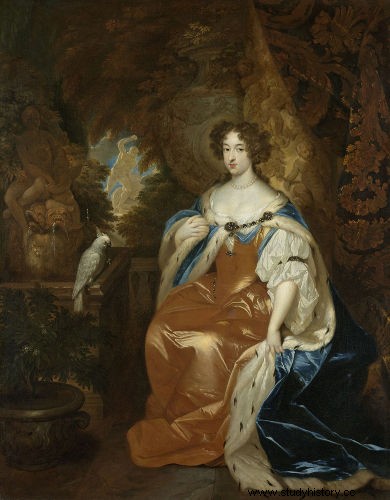
The Revolution Glorious is the name given to the events that took place in England and led to the deposition of James II from the English throne in 1688. With the Glorious Revolution, William of Orange and Mary Stuart became kings of England, marking the beginning of the period of constitutional monarchy.
Puritan Revolution
The Glorious Revolution is the continuation of a process that extended in England from 1640 to 1688 and is considered by historians as part of the English Revolution. This period began with the Revolution Puritan , also known as War Civil English . This was the first major event resulting from a series of frictions between the kings of the Stuart dynasty and the Parliament of England.
The Puritan Revolution resulted from the clash of the English king — Charles I — with the English Parliament. This clash between the King and Parliament is described, by political scientists Steven Levitsky and Daniel Ziblatt, as follows:
English constitutional tradition gave Parliament the exclusive right to collect the taxes necessary to finance the government. However, realizing that Charles was dangerously close to the papacy, Parliament refused to fund the monarchy unless it satisfied a comprehensive set of measures, including the virtual dismantling of the Church of England.|1|
This friction between King and Parliament was motivated by religious issues, since Parliament was Puritan and Charles I was Catholic, but also by the interest of English parliamentarians in reducing the King's powers. (England was an absolutist monarchy until then). Eventually, a civil war broke out in England and resulted in the fall of the Stuart dynasty and the regicide of Charles I in 1649 . With the beheading of the king, Oliver Cromwell assumed power of England in a dictatorial republic known as the Commonwealth .
Also see: Discover the history of one of the great symbols of absolutism in Europe
Monarchical Restoration
Oliver Cromwell ruled England in a dictatorial manner between 1653 and 1658, and then died for unknown reasons. His son Richard Cromwell took office but relinquished power in 1660 . Power returned to Parliament, which chose to restore the Stuart dynasty . Thus, power was transmitted through the coronation of Charles II, son of the king who had been beheaded in 1649.
This coronation only happened because Charles II accepted to become king under the condition of having his powers reduced, that is, he had to accept that he would not rule as an absolute monarch. This condition demonstrated the power that Parliament had won and that the times of absolutism in England had passed. The monarchical restoration, in turn, led to further friction between Parliament and the Stuarts.
Charles II's reign lasted until 1685, and then he was succeeded by his brother Jaime II . The succession to the throne was occupied by his brother because Charles II had no legitimate children. During the reign of James II, frictions with Parliament increased considerably because the king tried to strengthen Catholicism in England (remembering that the English Parliament was puritanical) and re-implementing an absolutist system .
Some of James II's measures were:exempting Catholics from taxes and distributing government positions only to Catholics. In addition, clashes with Parliament showed James II's willingness to rule as an absolutist king. With these conflicts, the English Parliament began to conspire.
Glorious Revolution

With the Glorious Revolution, Mary Stuart, daughter of the King, was crowned Queen of England.
As mentioned, King James II's actions displeased Parliament and left it fearful of the possibility of absolutism returning. The trigger, which led parliamentarians to plot the overthrow of the English king, was the birth of the son of James II, named Jaime Eduardo . The birth of the king's heir brought the great threat that a Catholic dynasty would be perpetuated in power.
Thus, parliamentarians from the two English parties (Whig and Tory ) gathered in a conspiracy and invited Mary Stuart , daughter of the king, and her husband, William from Orange , to participate in it. The invitation was made to both because they were both Protestants, as were the members of Parliament.
The conspiracy caused William of Orange to take troops to England in 1688, and this forced James II and his wife, Marie of Modena, to flee to France. After the flight of James II, Parliament crowned William of Orange and Mary Stuart as King and Queen of England. The transition of power took place without bloodshed and was marked in English history as the Revolution Glorious .
Also visit :Understand how the process of formation of the French monarchy took place
Importance of the Glorious Revolution
The first great importance of the Glorious Revolution for the history of England is that it definitively marks the fall of absolutism in that country. With that, England confirmed itself as a monarchy constitutional based on liberal principles , that were fundamental for the occurrence of other revolutions in the following century.
England's parliamentary constitutional monarchy was ratified through the Bill of Rights (Declaration of Rights), document that William of Orange and Mary Stuart had to sign before being crowned King and Queen of England. That document decreed, for example, that:
-
Taxes could only be increased with the approval of Parliament;
-
Kings were prohibited from expropriating private property and could not curb free speech.
The determinations of Bill of Rights followed the interests of the English bourgeoisie , interested in the implantation of liberal values as a way of combating the doctrines and privileges arising from absolutism that impeded its economic development. The implementation of a constitutional monarchy based on liberal principles was fundamental for England, as the new economic policy that was installed allowed the country to pioneer the Industrial Revolution in the following century.
|1| LEVITSKY, Steven and ZIBLATT, Daniel. How democracies die. Rio de Janeiro:Zahar, 2018, p. 113.
